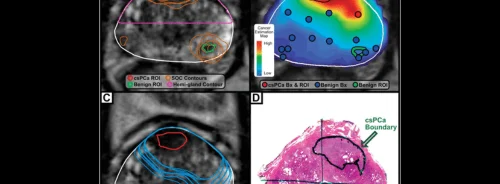HealthManagement, Volume 6 - Issue 4, 2006
Challenges Faced by Department Heads
Author
Prof. Dr. Andras Palko
Chairman
Department of Radiology
Faculty of General Medicine
University of Szeged,
Hungary
Radiology departments in the four Hungarian University Medical Schools (UMCs) are organised around three major tasks: patient care, research and training (graduate, postgraduate and CME). The structure is organised accordingly; departments are directed by a University Professor acting as Chairman and at the same time as Head of the department. The focus of patient care activity of these departments traditionally exceeds the service provided for other departments of the medical school, and usually the department of radiology acts as a regional centre possessing the necessary skills and equipment for taking care of even the most difficult cases.
Role of University Radiology Departments
Training obligations are threefold in these centres. The main duty is teaching radiology to medical students in the form of lectures, seminars and practicals, not only in Hungarian, but – for foreign students – also in English and German.
Departments of radiology are also responsible for training radiology residents in their own premises, and at the same time for the organisation of training in all departments of their region. It is also their duty to set standards and provide opportunities for credit-based CME of radiologists both locally and at a regional level. Scientific activities are performed in the form of basic and clinical research in cooperation with other specialties, nowadays mostly in connection with computer applications (CAD), contrast material development, experimental neuro-imaging, neuro-tractography, functional imaging, etc.
Human Resources
The staff of an average university department consists of about a hundred employees, of whom approximately 25% are medical doctors (cca. twenty specialists and five residents), 70 % are x-ray technicians, CT/MR operators, and nurses specialised in interventional radiology and the rest take care of PACS, computers, administration and maintenance. The Head of the department directly controls the staffing procedures and professional activities of the radiologists and indirectly –via the cooperation of a chief technician – the other employees.
Future Challenges
We face three potential threats here: one is that the number of residents entering radiology training has fallen behind the number of retiring radiologist specialists in the last decade; the other is that the private sector offers significantly higher wages to radiologists than the academic centres; the third is that it is more attractive for young specialists to continue their professional career abroad. Investment in teleradiology solutions may be of temporary help, but in the long run it may cause further difficulties, especially in the field of research and graduate/postgraduate training.
Financial Concerns
The Head of the university department is responsible for the budget, which is a difficult task because of the constant insufficiency of financing healthcare activities (which is the main source of income) compared to other expenditure. Other incomes, mostly resulting from training activities, are not able to counterbalance the negative balance of the overall budget. Theoretically research is funded by grants; however in practice the available university and other resources are rather limited. The explanation of the fact that despite all these difficulties it is still possible to manage an acceptable level of function lies in the extremely low wages (On average per month; CT/MR Operator 300€, Radiology Resident 300€, Assistant Professor 750€, Full Professor 1500€).
The insufficiency of financing makes it extremely difficult to purchase the most up-to-date technology in these institutes, resulting in the controversy that rather typically the private centres and even some community hospitals possess highend equipment much earlier than the university centres. This fact explains the unusual marriage between university departments and private serv ice providers, since that is how the necessary investments may find their path to the academic centres, which, on the other hand, have to do their best to bring about a contract that guarantees all important conditions indispensable for ongoing high quality training and research activities.
Conclusion
University departments of radiology face many challenges: on the one hand they are at the front line of all the actual turf battles and have to keep pace with the ongoing scientific and technological revolution both in research and training, while on the other hand they face increasing difficulties to find the necessary funds and the appropriately dedicated and enthusiastic staff to answer these challenges.
The solution to these problems may be to make the financial and technological environment in the academic radiology departments much more attractive, for which we have to achieve a change of paradigm in the attitude of politicians and other decision-makers responsible for health care, higher education and research.





